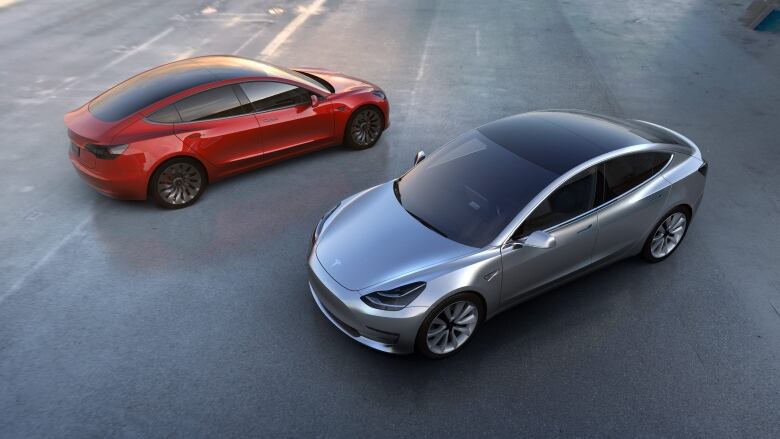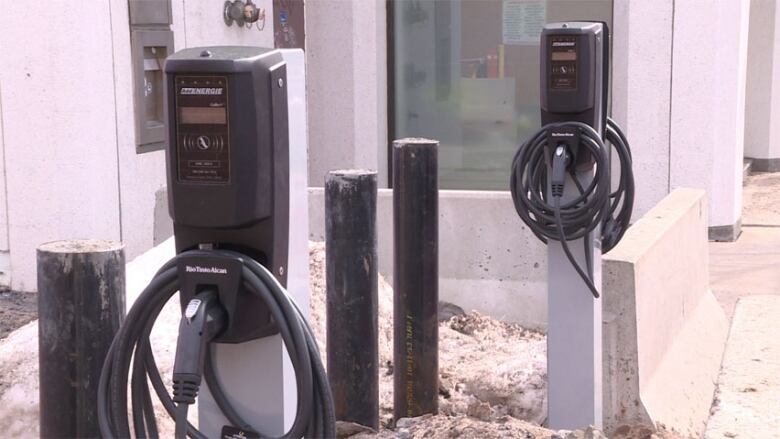Electric car sales seem poised for big jump: Can our grid take the load?
Hydro companies say they are ready, for the most part, for many more plugged-in vehicles

By day, Alec Tsang works as a senior technology analyst at BCHydro, where he's the public utility's point person on electric cars.
Most nights, you can find his family's all-electric Nissan Leaf plugged in and charging up.
And they are far from alone: Canada has nearly 20,000 plug-in vehicles on its roads and counting. If provinces achieve their targets, as part of the broader effort to cut greenhousegas emissions, there will be more than 500,000 electric passenger cars on the road come 2020.
- Electric car boom drives surge in charging-station demand
- The electric car and Canada's oil future
- Ontario boosts incentives for electric vehicles
It raises the question: Can the country's electricity systems handle the added load?
"We started looking at this quite early on, as far back as 2007," Tsang said of BC Hydro's efforts.
One study by the University of Victoria's Pacific Institute for Climate Solutionsfound that even in winter, when electricity demand is highest, B.C. had the unused capacity on its grid to charge nearly 2.4 million light-duty vehicles almost all the 2.8 million registered vehicles in the province.
"Even the most optimistic projections of electric vehicle adoption still represent a really gradual load growth on utilities' grids," Tsang said. "So in terms of generation and transmission, that large perspective, most utilities wouldn't have any problem meeting that demand."
Hydro-Qubec calculated that an electric car would use about the same amount of energy in an average year as a hot-water heater, and is just as confident about its ability to meet overall electricity needs.
"We did our homework and we could easily, in Quebec, welcome a million electric vehicles without having to make any major investments in our infrastructure or systems," spokesman Louis-Olivier Batty said.
"It would be two to three per cent of electricity sales in the province."
A million electric vehicles would also be 10 times Quebec's already ambitious goal of having 100,000 such cars on its roads by 2020 in other words, from a generating and transmission standpoint, the province has nothing to fret over.
Risk of local overload
It gets trickier, though, if the added demand all comes from one neighbourhood, or at the same time of day.
Electricity demand is low late at night, and often dips around noon on weekdays. But the power grid tends to heave a bit in the evening as people arrive home from work and turn on lights, ovens and TVs.
And what if an entire street of residents bought electric cars and plugged them in to charge at the same time?

The scenario isn't as unlikely as it might sound. Hybrid-electric cars already tend to cluster within certain neighbourhoods. Plug-in electric cars are expected to do the same as neighbours see each other getting new cars, talk about the benefits of not having to fill up at the pumps, and sell each other on the idea of electric transport.
The problem is that the neighbourhood transformers that convert electricity to the right voltage before it enters people's homes aren't designed for the kind of load created by a number of cars all drawing large amounts of power from the grid at the same time, and they may fail, causing neighbourhood power outages.
Alreadyareas like downtown Toronto have trouble meeting local demand for electricity, according to the Toronto Atmospheric Fund, the city government's climate agency.
"The system will have problems if everyone starts plugging in electric vehicles," said Julia Langer, the organization's CEO.
"We don't have any spare electricity, and for a bunch of reasons that has to do with transformer capacity. They're really ancient."
Conservation, time of use
Langer's group and others, including electricity companies, are advocating a number of possible solutions.
Conservation is key: if household electricity use can be pared through more efficient water heaters and fridges, better home insulation and higher-quality light bulbs, that will free up capacity to charge cars.
Another solution is to modify people's overall electricity use through time-of-day pricing, where it costs more to draw power at times of peak demand, and significantly less to run the washing machine or charge up a Chevy Volt, say, overnight.

Already the newest electric carsand the latest charging-station technologylet drivers plug in and set a time for charging to begin. In the future, cars will be able to interface with so-called smart electric grids that convey the price of electricity moment-by-moment, so that charging can be automatically engaged only during periods of low overall demand.
"There are technologies to spread out the electricity use so it doesn't hit the system all at once," said Chantal Guimont, CEO of Electric Mobility Canada, a non-profit that advocates for electricity-powered transportation.
But among the three provinces with by far the largest number of electric cars Quebec, Ontario and B.C. only Ontario has time-of-use electricity rates.
Equipment upgrades needed
Ultimately, electricity providers will almost certainly have to upgrade their local equipment in some cases, said Chuck Farmer, director of conservation and demand planning for Ontario's Independent Electricity System Operator, which operates the province's electricity market.
"There are going to be new transformers needed. Most local utilities we talk to are cognizant of this trend," Farmer said.
But BC Hydro's Tsang and Hydro-Qubec's Batty are confident their companies can predict and manage the added load.
"We're generally able to detect that with our vast metering infrastructure," Tsang said. "We anticipate some overloading, but these transformers are very robust. They'll be able to withstand that, and we'll be able to go in and upgrade."
Farmer said the big picture is still rosy.
"In general, what we say about the system is we're in a good place in terms of our availability to meet the demands of customers. So we don't have a great concern."
With files from CBC's Emily Chung












_(720p).jpg)


 OFFICIAL HD MUSIC VIDEO.jpg)
.jpg)



























































































